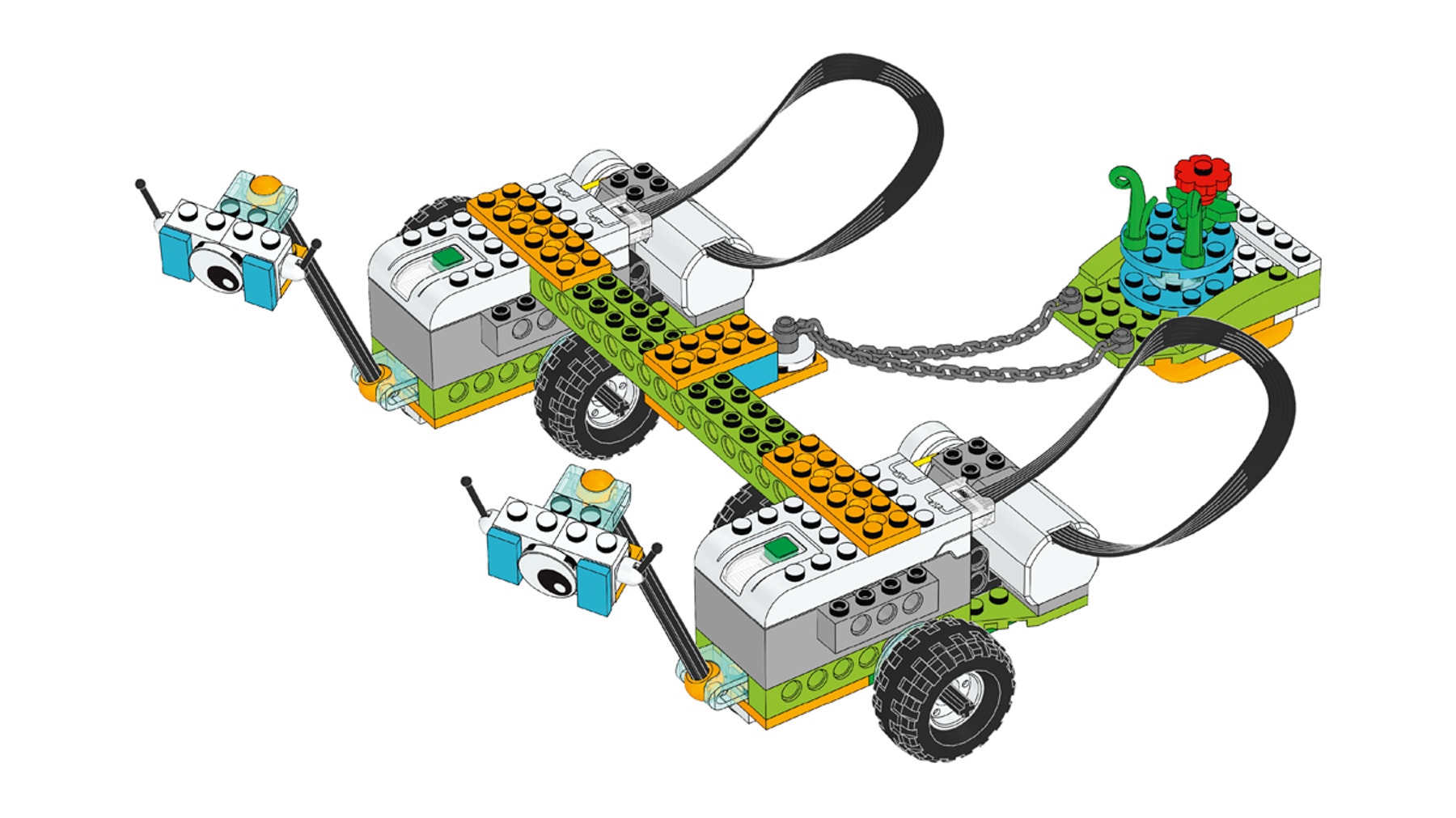Getting Started Project, part D: Collaborating
Love using WeDo 2.0? Learn more about our next generation product, LEGO® Education SPIKE™ Essential.
Explore the importance of collaborating during projects.

1. Preparation
(15-30 minutes)
• Read the general preparation in the “Classroom Management” chapter.
• Read about the project so you have a good idea of what to do.
• Define how you want to introduce this project: Use the video provided in the project in the WeDo 2.0 Software, or use material of your own choice.
• Determine the end result of this project: the parameters to present and produce the document.
• Make sure timing allows for expectations to be met.
Important
It is recommended that you complete the four Getting Started Projects in a single sequence. If not, then it is preferable that you complete these prior to continuing on to other projects in order to provide students ample time to explore the materials.
Approximate timing for the four Getting Started Projects is:
• Part A: Milo, the Science Rover: 40 min.
• Part B: Milo’s Motion Sensor: 15 min.
• Part C: Milo’s Tilt Sensor: 15 min.
• Part D: Collaborate: 15 min.
2. Explore phase
(3 minutes)
Now that your rover has found the plant sample, it is time to carry it back. But wait. It might be too heavy! Let's see if you can collaborate with another rover to move the sample forward together.
3. Create phase
(7 Minutes)
Pair up the teams to complete this final part of the mission:
- Have them build the transportation device, physically connecting the two rovers together.
- Let students create their own program strings so they can move the specimen from point A to B. It doesn’t matter where point A or B is.
Students could use the following program strings.

- When everyone is ready, have the team move their plant sample carefully.
Suggestion
For teams working on their own, note that you can connect up to three Smarthubs to the same tablet. See the “Toolbox” chapter for instructions on how to do that.

4. Share phase
(5 minutes)
Have students talk about their experiences:
• Why is it important to collaborate to solve a problem?
• Give an example of good communication among teams.
Finally, have students complete their document with the Documentation tool while collecting and organizing important information.
Important
Because not all the WeDo motors are the same, teams will have to collaborate in order to succeed.
Teacher Support
Students will:
Create and program a device to move the plant sample.
Document and present how Milo's mission went overall.




